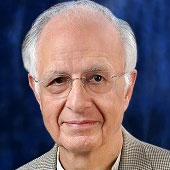The Architecture of Democracy’s Processes
It is not enough for a democracy in the 21st century to make decisions by up-down majoritarian votes.
October 21, 2017

Democracies require an architecture of institutions and processes to support them.
Some institutions provide the vertical pillars. Other institutions provide the lateral binders that give strength and stability to the democratic structure.
In the popular discourse about democracy – and while spreading around the idea of democracy, which the West, especially the United States, has made its mission – too much attention has been given to the vertical institutions required for people to elect their leaders.
Too little attention lately is given to the lateral institutions required to create harmony among diverse people.
Can technology Facilitate Democracy? The Case of India
Climate Change: Can Today’s Societies Make Big Choices?
Universal franchise, elections and political parties fighting each other to win elections are institutions that enable a society to determine who is in the majority and has the right to govern.
Yes-No votes in a complex world
The problem with majoritarian democracy is that it is not designed to find solutions for complex problems with many points of view.
A government with a majority, especially a large one, can become as authoritarian as a dictatorial one. It can deny minorities their rights for their views to be considered while framing laws and resolving contentious issues. The people have spoken once, it contends, and that should be enough. Now, the people must leave it to the government in power.
A government can then justify the exclusion of the minority because it was elected by a majority.
However, by excluding the views of the many that did not vote for it – and quite often these may even be the majority in first-past-the-post elections – a government reduces its own effectiveness.
Policy-by-judiciary?
In countries where the courts are independent, like in India, those dissatisfied with the governments’ decisions go to courts. However, courts are not set up to find policy solutions to complex problems. Moreover, they must interpret the laws as written.
In India, where I live, ministers of the government have begun to complain that India’s courts are venturing into matters of governance that they should not. This is a sign that something is missing in India’s democracy.
Referendums aren’t the answer, either
When problems are complex, with many interacting forces and several contending stakeholders, good governance requires effective methods for people’s participation. Referendums of the entire electorate give only an illusion of good democracy – that the people have been consulted.
Because the opinions of masses of people must be swayed, politicians on both sides of the referendum typically run populist campaigns that appeal to the basest of instincts. That is the opposite of what should happen. When the issue is complex, voters should be educated about what they are voting for.
Worse, when a simple majority determines how all must go in the future (e.g. 52% versus 48% for Brexit), referendums become yet another example of the problem with majoritarian democracy rather than a good solution.
Healthy democracies need intermediate processes that lie between the open public sphere of civil society and the media on one side and the formal, constitutionally established decision-making institutions, like parliaments and courts, on the other side.
A free public sphere can raise issues. Social media has made it even freer. However, it cannot resolve them because people are not listening to each other.
The formal institutions of democracy have become overburdened, in India and elsewhere. The reason is that the complex issues at hand that are raised in the public sphere have not been pre-digested by intermediate processes and institutions.
The solution: Deliberative democracy
In his book, The Price of Civilization: Economics and Ethics After the Fall (2011), Jeffrey Sachs, director of the Earth Institute at Columbia University, laments that in the United States today, there is little systematic public deliberation and the public’s views are not taken seriously in the political process.
Sachs says that policy decisions are being adopted behind the backs of the public, often in direct contradiction of public opinion. Donald Trump was carried to the top by a wave of resentment among U.S. citizens against elite policymakers and politicians who, those citizens believe, do not understand them and whose arguments citizens cannot understand.
A large trust deficit has emerged between democracy’s formal political establishment and the people. That is true in the United States and in Europe too, where “populist” leaders have been rising on an anti-Establishment wave.
Democracy is shallow when it functions primarily as processes for citizens to vote. In that process, they often only express their preexisting political preferences. That process needs to become deeper so that citizens are engaged in deliberations that enable them to understand the implications of alternative solutions to societal needs.
Such deliberations are more democratic when all citizens are provided information in terms all can comprehend, and when they are able to participate in the deliberations without fear.
Methods must be found to engage citizens, thoughtfully, with issues that matter to them. How should raw public opinions be gathered from diverse constituents of a democratic society and what should be the design of processes for their refinement?
These are critical issues in designing processes for democratic deliberation in the 21st century.
Takeaways
Democracy is about more than vertical institutions for electing people to make choices for us.
Majoritarian democracy is not designed to find solutions for complex problems with many points of view.
Simply sending voters to the ballot box to make huge policy choices does not mean an informed democracy.
When courts have to make policy, something is wrong in the rest of a democracy.

